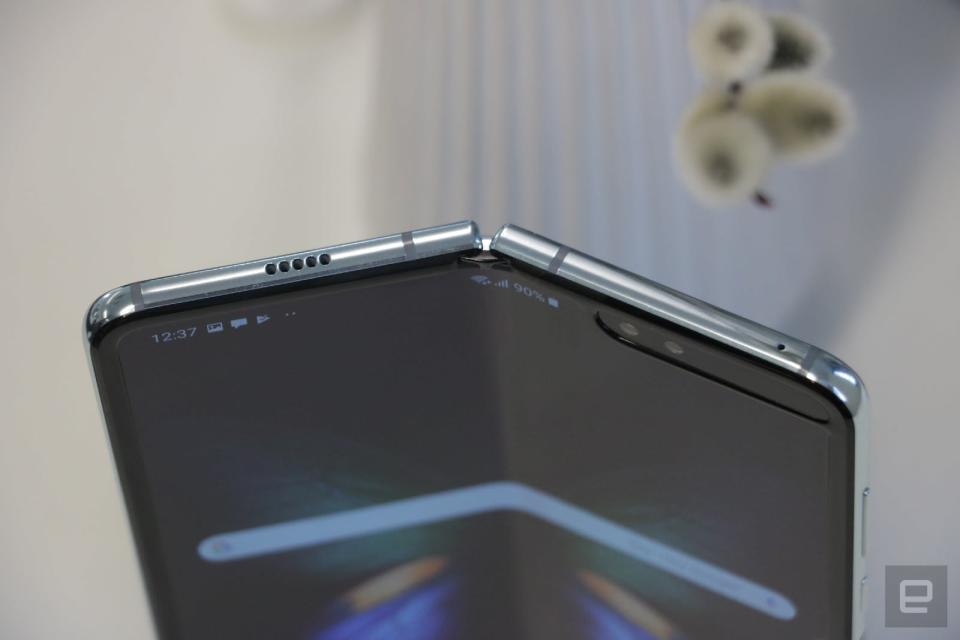Samsung's reinforced Galaxy Fold feels stronger than before
Three key changes improve the foldable phone's structure to make it more durable.
At last, Samsung is ready to unveil the refined Galaxy Fold. After an embarrassing initial rollout earlier this year that was plagued with multiple damaged review units, the company was forced to delay launching its foldable flagship. It went back to the engineering room to figure out how to make the handset more durable, and seems to have sorted out its issues, announcing in July that the Fold would be available in September. Well, here we are now in September at IFA 2019, and Samsung has finally given us our first hands-on with the redesigned device.
Samsung reps told us that three main changes were made here. First, caps were added to the top and bottom edges of the hinge to seal off gaps that previously might have allowed specks of dust to get in the mechanism. Particles of debris or dirt were potentially jamming the hinge and causing it to break, so this prevents that from happening.
Previous damage was also caused by people peeling off what looked like a screen protector on the display, but that was actually a protective polymer layer on the screen. Because it didn't fully cover the entire 7.3-inch folding display, there were edges that people could pick at. With the redesign, this layer now extends beyond and tucks under the bezel so there aren't bits exposed.
The company also added layers of metal under the display to strengthen its protection and hopefully make it so that you wouldn't be able to feel machinery beneath the screen when you poke at it. Certainly, during our hands-on, the Fold seemed sturdier than before. It felt less like a prototype and more like a finished product ready for store shelves, and opening and closing the hinge still felt as satisfying as before. If anything, the reinforcements and a more-resounding "thunk" when the Fold locked into place made the opening and closing experience feel even more rewarding.
With the updates, the Fold also locks into place more rigidly than before, and it's almost completely 180-degrees flat when open. This stronger lock also makes the device less floppy when you're holding the open phone with one hand.
In addition to these structural improvements, Samsung also managed to reduce the gap between the Fold's hinge and body so it isn't as thick when closed as it was before. There still is a gap there, and it's still a noticeable size, but at least there's been some progress in minimizing it. Speaking of flaws that are still there, the Fold's display still has a prominent crease running down the middle. But like we said when we first checked out the foldable, this is easy enough to ignore.

Beyond those hardware changes, nothing else is new on the Galaxy Fold. It still features the same continuity software that lets apps extend automatically to make full use of the 7.3-inch screen when you unfold the phone. The outside display is still the same tiny 4.6-inch panel as before, which feels as antiquated as always. Samsung said nothing else has changed, which means presumably the screen resolutions, battery size and camera setup are the same too.
The Fold will be available in Korea starting tomorrow for 2,398,000 Won, and will arrive in Germany, the UK and Singapore on Sept. 17th. 5G versions will be available in select markets, including Korea. As for those of us stateside eagerly awaiting the Fold's arrival, Samsung said it will hit the US "in the coming weeks."
